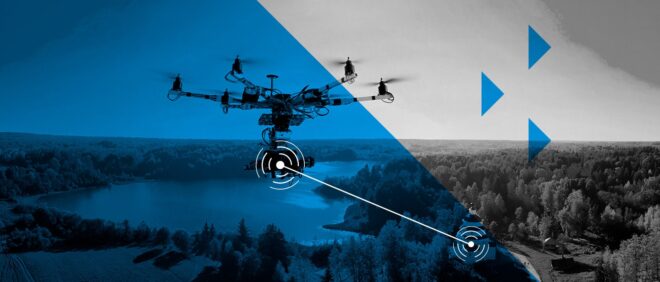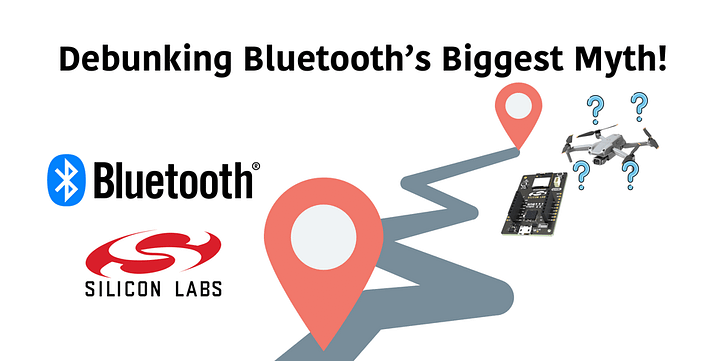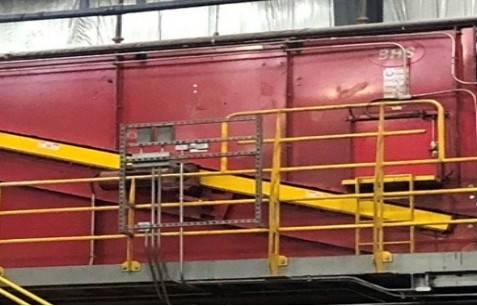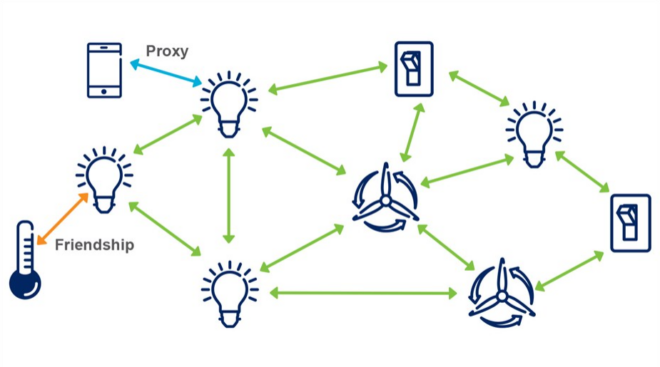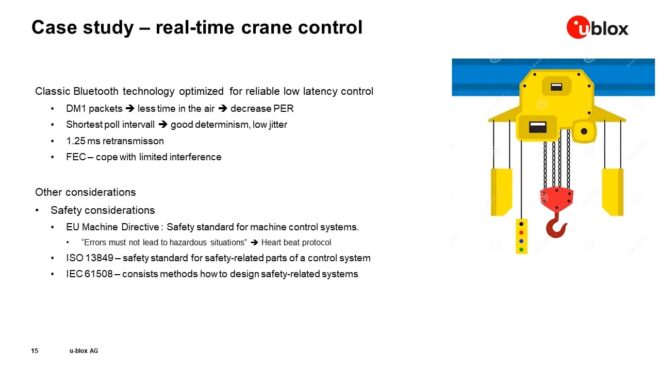For years, Bluetooth® technology enhanced the lives of millions of people around the world, becoming an integral part of how we stay connected. Its global proliferation has sparked a number of myths about what the technology can and can’t do. In truth, Bluetooth technology goes far beyond personal devices, powering a wide range of essential solutions, from asset tracking and indoor navigation to networked lighting control and industrial innovations. This article looks at a few of the most common myths about Bluetooth technology and the facts behind the fiction.
“Bluetooth’s growth has fueled many startups that we have worked with over the years, and we discover new uses for the long-range extensions in a lot of projects that we are evaluating.”
– Jean-Samuel Chenard, PhD, Motsai Inc.
Myth: Bluetooth Is a Short-Range Technology
Due, in large part, to how the technology was first used, there is a widely held opinion that Bluetooth® technology is only good for short-range applications. Since the most well-known use cases, such as audio streaming and wearables, have design requirements that dictate a shorter range, these developers chose to implement the technology and hardware in a way that delivers a max range of 10 to 30 meters.
Fact: Bluetooth Signals Can Extend to More Than a Kilometer
The effective, reliable distance between Bluetooth® devices can be greater than a kilometer and can even support reliable remote control of beyond-visual-range (BVR) drones. Though several factors can influence the effective range of Bluetooth technology — from radio spectrum and transmit power to antenna gain and path loss — the variable range is proof of the technology’s versatility. Unlike other wireless technologies, the wide spectrum of achievable and reliable distances gives developers tremendous flexibility to create solutions that meet the precise needs of their target use case. Check out other factors — such as receiver sensitivity, antenna gain, and PHY — that play a role in determining how far Bluetooth range can go.
![]()
FEATURED TOOL
The Bluetooth Range Estimator
Calculate the expected range between two Bluetooth devices.
Myth: Interference Makes Bluetooth Connections Unreliable
One of the biggest challenges for any wireless technology in providing reliable data communication is interference. Unlike wired data communications technologies, wireless technologies must share the transmission medium and multiple devices may try to communicate over the same wireless spectrum, in the same general area, and at the exact same time. When this happens, in-air collisions between data packets occur which can make a packet unreadable by the receiving device and effectively lost. Packets being transmitted between two devices can be corrupted or lost if they collide with a packet being transmitted at the exact same time and frequency channel between other in-range devices.
Fact: Bluetooth Technology Is Designed to Overcome Potential Interferers
Bluetooth® technology has adopted several techniques to lower the probability of collisions and offset inevitable packet loss. Two ways Bluetooth technology overcomes potential interferers and enables reliable wireless data communication is by using adaptive frequency hopping and small, fast data packets.
The reliability of any wireless system is all about spectral efficiency: shorter packets equal fewer collisions. Bluetooth packets are typically half the size and four times faster. Having small, fast packets enables more efficient use of the spectrum and significantly lowers the probability of collisions.
Spread spectrum techniques can increase resiliency in busy radio environments where collisions and interference are more likely to occur. Adaptive frequency hopping is a unique spread spectrum technique that enables Bluetooth packets to adapt to avoid active, congested channels. Channels that are noisy and busy are marked and not used. The list of reliable channels and busy channels can change quickly as other wireless communication devices and noise in the environment come and go. Adaptive frequency hopping allows Bluetooth technology to dynamically track which channels are functioning best and find the most reliable path.
Learn more about how Bluetooth® technology supports reliable data communication.
“Bluetooth® is unique in the way it uses technologies like adaptive frequency hopping and MIC that enhance reliability without adversely affecting power consumption.”
– Masuto Nishiura, Kozo Keikaku Engineering
![]()
FEATURED DOWNLOAD
Understanding Reliability in Bluetooth Technology
Download this detailed discussion on reliability in wireless data communication and the techniques Bluetooth technology uses to increase reliability.
Myth: Bluetooth Technology is Only Useful in Consumer Applications
There’s widespread misunderstanding about Bluetooth® technology’s commercial and industrial potential. In the last 20 years, Bluetooth technology created and cultivated hundreds of new global markets with audio streaming and short-range data transfer being two of the most prevalent. And while Bluetooth technology is well known for advancing the connective capabilities of audio headsets and fitness trackers, that is just a narrow aspect of its full potential.
Fact: Bluetooth Technology Supports Commercial and Industrial Spaces
All over the world, developers use Bluetooth® technology to achieve reliable wireless connections at long distances in challenging environments, and these connections are the foundation of a new generation of use cases like industrial asset tracking, large-scale sensor networks, and networked lighting control.
Recently, Energy Management Collaborative (EMC) partnered with Silvair and McWong International to deploy the largest Bluetooth Mesh lighting control installation in the world, installing 3,685 Bluetooth Mesh lighting controllers across 17 floors of a 470,000 square-foot office building. SmartShepherd partnered with Cassia Networks to enable real-time tracking monitoring of livestock with Cassia’s Bluetooth gateways and IoT access controller. And POM Tracer collaborated with Laird Connectivity to use Bluetooth technology to create an easy-to-implement product that allows businesses and organizations to safely return employees to their offices, mitigating the risk of future shutdowns due to COVID-19.
“Compact, fast, radio-efficient data packets make the foundation for Bluetooth® Mesh.”
– Szymon Slupik, CTO and co-founder, Silvair
High Reliability and Long Range
Bluetooth® technology is capable of achieving highly reliable communication and significant range in even the most challenging circumstances. The range and reliability of Bluetooth technology is more than just the sum of its parts; the technology was designed with these factors in mind.
For a detailed discussion on the many mitigation techniques Bluetooth technology uses to increase reliability, download Understanding Reliability in Bluetooth Technology. And check out the Bluetooth range estimator to see how far Bluetooth range can go for you.
![]()
FEATURED
How Bluetooth® Technology Makes Wireless Communication Reliable
Learn about the challenge of wireless interference and the techniques Bluetooth technology uses to overcome it.



